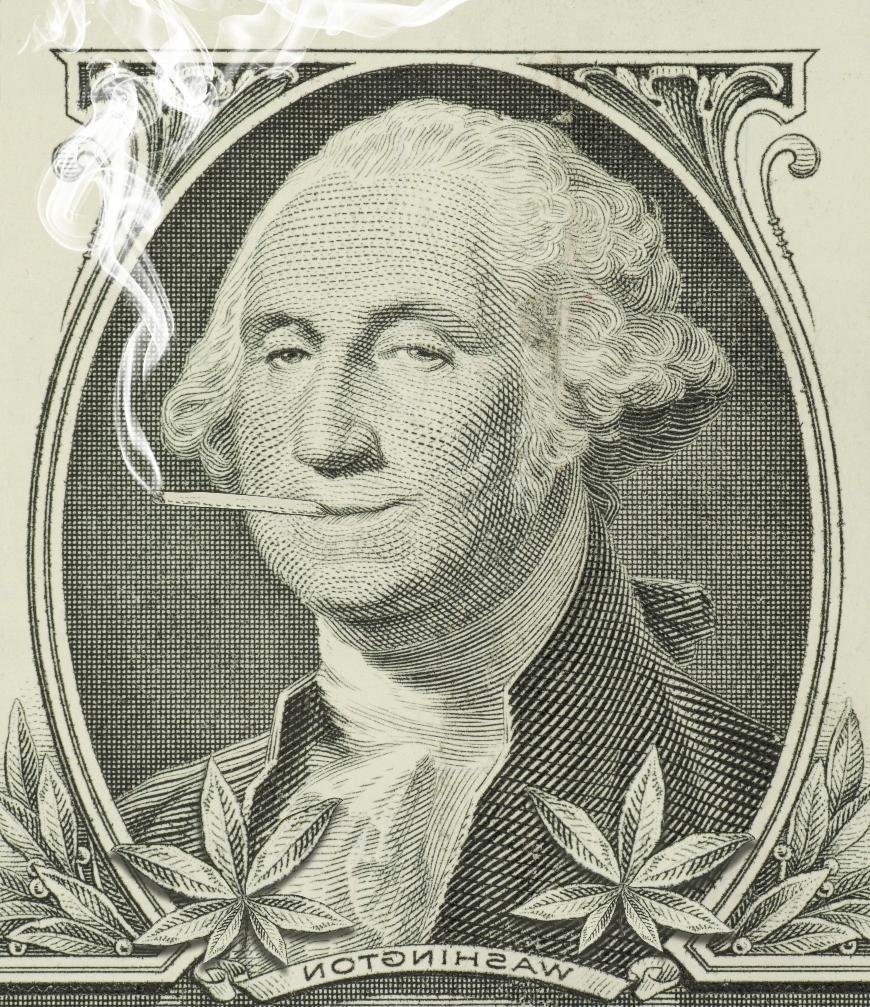Top 10 Historical Weed Smokers
Discover the intriguing world of the Top 10 Historical Weed Smokers as we delve into influential potheads throughout time and their impact on culture and creativity.

Historical weed smokers have long been a fascinating subject for those interested in the history of cannabis use. The plant has played a significant role in various cultures and societies throughout time, providing not only medicinal benefits but also influencing creative processes and social norms.
In this blog post, we will delve into the lives of some prominent historical potheads who left their mark on society while smoking marijuana. We'll explore the cultural significance of cannabis use from ancient civilizations to early 1900s America, shedding light on how perceptions around its consumption evolved over time.
As we journey through history, you'll discover how these historical weed smokers' creative endeavors were influenced by their affinity for cannabis and how it impacted their lives and work. To conclude, we'll examine the implications of our discoveries and contemplate what can be learned from these fascinating accounts.
Table of Contents:
- Introduction to Cannabis Use Throughout History
- Ancient Civilizations
- Spiritual Practices & Rituals
- Cannabis in Literature & Art
- Top 10 Historical Potheads
- Prohibition and Changing Perceptions
- Creative Processes Influenced by Cannabis
- FAQs in Relation to Historical Weed Smokers
- Conclusion
Introduction to Cannabis Use Throughout History
Cannabis has a long and storied history, with its use dating back thousands of years across various cultures. The plant has been utilized for medicinal, spiritual, and recreational purposes throughout the ages. In this section, we will delve into the cultural and societal contexts in which cannabis has been used over time.
Ancient Civilizations
The earliest recorded use of cannabis dates back to ancient China around 5000 BCE, where it was primarily cultivated for its fibers and seeds. It was also used medicinally as an anesthetic during surgeries. Similarly, ancient Egyptians employed cannabis for treating ailments such as glaucoma and inflammation.
Spiritual Practices & Rituals
In many societies, cannabis played a significant role in religious practices and rituals. In ancient Israel, cannabis was reportedly employed in religious ceremonies at the Temple of Jerusalem. Rastafarianism, a faith originating in Jamaica during the early 1900s, views marijuana consumption as an act of holiness that brings them closer to their deity.
Hinduism & Cannabis: A Sacred Connection
- Lord Shiva: Hindu mythology attributes Lord Shiva's discovery of marijuana while meditating amidst tall plants; he consumed their leaves after feeling famished from his deep meditation session.
- Holi Festival: Bhang, a cannabis-infused drink, is consumed during the Holi festival to celebrate the victory of good over evil.
- Shivratri: Devotees consume bhang on Maha Shivratri as an offering to Lord Shiva and to seek his blessings.
Cannabis in Literature & Art
Literary works and art from various eras have also depicted cannabis use. The famous Persian poet Hafez wrote about wine and hashish consumption in his poems during the 14th century. In Europe, artists like Vincent van Gogh were known for their affinity towards absinthe - a potent alcoholic beverage sometimes infused with cannabis.
The Beat Generation: A Literary Movement Fueled by Cannabis
The mid-20th-century literary movement known as The Beat Generation, which included writers such as Jack Kerouac, Allen Ginsberg, and William S. Burroughs, embraced marijuana usage as part of their countercultural lifestyle. Their works often featured themes related to drug use and exploration of altered states of consciousness.
In summary, throughout history, people from different cultures have utilized cannabis for various purposes - medicinal treatments or spiritual rituals that spanned across continents. As we move forward through this article exploring historical figures who enjoyed consuming marijuana recreationally or medicinally alike - it's essential not only to understand its cultural significance but also to acknowledge how societal perceptions surrounding the plant evolved over time leading up to today where legalization movements continue gaining momentum worldwide.
For centuries, cannabis has been a significant part of humanity's cultural experience, influencing societies across the globe. With this introduction to cannabis use throughout history as a backdrop, we now turn our attention to some of the most famous potheads from different eras: let's take a look at the top 10 historical weed smokers.

Top 10 Historical Potheads
Throughout history, many famous personalities have been known for their cannabis use. These individuals span across various fields such as literature, art, music, and activism. Here is a list of the top 10 historical figures who were fond of cannabis:
- Bob Marley: The legendary reggae musician was an avid advocate for marijuana legalization and incorporated its use into his spiritual practices as a Rastafarian.
- Carl Sagan: This renowned astrophysicist and author openly admitted to using cannabis to enhance his creativity and understanding of complex scientific concepts. The Guardian provides more insights into Sagan's life and work.
- Louis Armstrong: The iconic jazz trumpeter often credited marijuana with helping him relax after performances. He even wrote about it in his autobiography titled Satchmo: My Life in New Orleans.
- Frida Kahlo: Known for her unique self-portraits, this Mexican artist used marijuana to cope with chronic pain resulting from a bus accident she experienced during her youth.
- Pablo Picasso: One of the most influential artists in history, Picasso was said to have experimented with hashish (cannabis resin) during his time spent living in Paris.
- Hunter S. Thompson: This American journalist, author, and creator of Gonzo journalism famously included drug experiences - including those involving cannabis - in his works like Fear and Loathing in Las Vegas.
- William Shakespeare: Some scholars believe that the famous playwright may have used cannabis for inspiration, as traces of the substance were found in pipes excavated from his garden. The Independent discusses this theory further.
- George Washington: America's first president was known to cultivate hemp - a variety of Cannabis sativa - on his plantation at Mount Vernon, though it is unclear if he consumed it for recreational purposes.
- Maya Angelou: This celebrated poet and civil rights activist wrote about her experiences with marijuana in her autobiography I Know Why The Caged Bird Sings, describing how it helped her feel more connected to others.
- John Lennon: As a member of The Beatles, Lennon openly advocated for peace and love, which included embracing cannabis culture. He even mentioned marijuana use in some of his song lyrics.
These historical figures' connection with cannabis offers fascinating insights into their lives and work. Their experiences show how the plant has been intertwined with creativity, spirituality, relaxation, and advocacy throughout history. Smoking marijuana has been a part of human culture for centuries, with evidence of its use dating back to the early 1900s.
The top 10 historic cannabis users have made a lasting impact on the culture and chronology of marijuana use, thereby forming an integral part of our shared awareness. Moving forward, we will explore the cultural significance that cannabis has had throughout time in various societies.
Cultural Significance of Cannabis Use
The relationship between cannabis and culture is deeply intertwined, with historical figures who consumed the plant often contributing significantly to various aspects of society. These individuals have left a lasting impact on art, music, literature, and advocacy through their creative works and activism.
Artistic Expression Inspired by Cannabis
Many artists throughout history have found inspiration in cannabis use. For example, Pablo Picasso, one of the most influential painters of the 20th century, was known for his experimentation with different substances including cannabis. It has been hypothesized that his exposure to marijuana may have had a formative impact on the development of his distinctive creative approach.
Musical Innovations Rooted in Cannabis Culture
In the world of music, numerous musicians have incorporated cannabis into their lives and work. Bob Marley, a reggae legend and proponent of marijuana legalization, incorporated cannabis into his Rastafarian spiritual practice. His songs often featured themes related to social justice issues such as poverty and oppression while promoting peace through ganja's healing properties.
- Louis Armstrong: Jazz icon Louis Armstrong also had a strong connection to cannabis; he referred to it as "gage" or "muggles." He believed that smoking marijuana helped him relax after performances and enhanced his creativity when composing new pieces.
- The Beatles: The British rock band The Beatles experimented with various drugs during their career but were particularly fond of marijuana. The Beatles' iconic album 'Sgt Pepper's Lonely Hearts Club Band', which was inspired by psychedelic experiences, including cannabis use, marks a major milestone in the history of concept albums.
Literary Works Influenced by Cannabis Consumption
Several renowned authors have also been known to consume cannabis and incorporate it into their writing. American author Allen Ginsberg, a prominent figure in the Beat Generation literary movement, was an advocate for marijuana legalization and often wrote about his experiences with the plant. His poem "Howl" is considered one of the most important works of 20th-century literature and reflects themes related to personal freedom, drug use, and counterculture ideals.
Cannabis Advocacy Throughout History
Beyond creative expression, many historical figures have used their influence to advocate for cannabis reform. For instance, astronomer Carl Sagan was a vocal supporter of marijuana legalization throughout his life. He argued that its prohibition was based on misinformation and prejudice rather than scientific evidence or rational consideration.
In summary, these historical figures have played crucial roles in shaping our cultural landscape through various artistic mediums while advocating for changes in societal attitudes towards cannabis use.
Through the ages, cannabis has been an integral part of many societies' development and culture. As perceptions and laws around its usage have changed over time, it is important to understand how prohibition impacted the way we view this substance today.
Prohibition and Changing Perceptions
The history of cannabis prohibition is a complex and multifaceted story, deeply rooted in societal norms, political agendas, and economic interests. Perceptions about cannabis have changed drastically over time - from being respected as a holy herb to becoming seen as an illicit drug.
A Brief History of Cannabis Prohibition
For millennia, cannabis has been utilized for its healing properties, spiritual significance, and recreational activities in many societies. However, it wasn't until the early 20th century that efforts to criminalize its use began gaining momentum. The Marihuana Tax Act of 1937 marked the beginning of federal cannabis prohibition in the United States. This legislation imposed heavy taxes on those who dealt with hemp or marijuana products while also restricting their production.
In subsequent decades, anti-cannabis propaganda campaigns like "Reefer Madness" fueled public fear around its use by associating it with crime and deviant behavior. The Controlled Substances Act (CSA) passed in 1970 further solidified this stance by classifying marijuana as a Schedule I substance alongside drugs such as heroin and LSD.
The Shift Towards Legalization & Acceptance
- Medical Marijuana: In recent years, there has been growing recognition of the potential therapeutic benefits associated with smoking marijuana; particularly when it comes to treating conditions such as chronic pain or epilepsy. This led to an increasing number of states legalizing medical marijuana programs starting with California's Proposition 215 in 1996.
- Recreational Use: As public opinion shifted and the stigma surrounding cannabis began to dissipate, several states moved towards legalizing recreational use. Colorado and Washington were the first to do so in 2012. Today, a total of 18 states have legalized adult-use marijuana.
- Federal Decriminalization Efforts: While marijuana remains illegal at the federal level, there are ongoing efforts to decriminalize its possession or consumption. The Marijuana Opportunity Reinvestment and Expungement (MORE) Act, which aims to remove cannabis from the list of controlled substances under CSA, is one such example.
The evolving attitudes towards cannabis can be attributed not only to an increased understanding of its potential benefits but also due in part to influential historical figures who openly embraced it. Their stories serve as powerful reminders that societal perceptions can change over time - paving the way for greater acceptance and appreciation of this ancient plant.
The prohibition of cannabis has had a long and turbulent past, yet with shifting views it is gradually being embraced by the public. As we progress in our examination of the artistic inspirations associated with cannabis, it will be intriguing to observe how this substance carries on to shape our society.

Creative Processes Influenced by Cannabis
Throughout history, many renowned artists and thinkers have turned to cannabis as a source of inspiration and relaxation. This section delves into how these individuals incorporated cannabis into their creative processes or spiritual practices, revealing its potential role in fostering innovation.
Bob Marley: Spirituality & Music
Bob Marley, the legendary reggae musician, was known for his strong connection with Rastafarianism - a religious movement that considers cannabis sacred. For Marley, smoking marijuana was not just about recreation; it was an essential part of his spirituality and music-making process. He believed that cannabis allowed him to tap into deeper levels of consciousness and creativity while composing songs like "Redemption Song" and "One Love."
Louis Armstrong: Relaxation & Inspiration
Jazz icon Louis Armstrong also had a close relationship with cannabis throughout his life. Known as "gage" at the time, he often smoked before performances to relax and focus on the moment. In addition to helping him cope with stress from touring schedules, Armstrong credited marijuana for enhancing his musical improvisation skills - a hallmark of jazz performance.
Carl Sagan: Scientific Curiosity & Imagination
Astrophysicist Carl Sagan, famous for popularizing science through works like Cosmos series, openly discussed using marijuana in private essays under pseudonym Mr.X. He contended that cannabis use allowed him to ponder more imaginatively on intricate scientific ideas such as alien life forms or the beginning of the cosmos. Sagan's experiences with cannabis may have played a role in shaping his unique approach to science communication and storytelling.
William Shakespeare: Literary Genius & Speculation
While there is no definitive evidence, some researchers believe that William Shakespeare, one of history's most celebrated playwrights, might have used cannabis during his lifetime. Some believe that Shakespeare may have used cannabis while writing his famous works, evidenced by the traces of cannabinoids found in pipes from his garden.
Frida Kahlo: Pain Relief & Artistic Expression
Mexican artist Frida Kahlo, known for her vivid self-portraits and surrealist paintings, reportedly used marijuana as a pain reliever after suffering severe injuries from an accident. It has been suggested that her use of cannabis may have contributed to the dreamlike quality present in many of her artworks - allowing her imagination to run free despite physical limitations.
In examining these historical figures' relationships with cannabis, we can see its potential influence on their creativity and artistic output. As society continues moving towards greater acceptance and legalization, perhaps more artists will openly embrace this ancient plant as part of their creative processes.
The creative processes influenced by cannabis are vast and varied, from music to art to writing. It is clear that marijuana has had a profound impact on many lives and works of those who have chosen it as their muse. Now we will explore the effects of this powerful plant on the lives and work of historical weed smokers.
FAQs in Relation to Historical Weed Smokers
Who smoked the most weed in history?
It is difficult to determine who smoked the most weed in history, as consumption varied across individuals and cultures. However, some prominent historical figures known for their cannabis use include William Shakespeare, George Washington, Bob Marley, and Carl Sagan. Each of these individuals had different levels of consumption but contributed significantly to the cultural significance of cannabis.
What is the historical significance of weed?
The historical significance of weed lies in its various uses throughout human history. Cannabis has been used for medicinal purposes, religious rituals, recreational enjoyment, and even as a source of fiber for textiles. Its versatility made it an important crop in many ancient civilizations such as China and Egypt.
When was the first time someone smoked weed in history?
The first recorded instance of someone smoking cannabis dates back over 2,500 years ago among Scythian tribes inhabiting Central Asia. They would inhale smoke from burning hemp seeds during funeral ceremonies to induce altered states and commune with spirits.
How did ancient humans smoke weed?
Ancient humans primarily consumed cannabis by inhaling its fumes or vapors rather than directly smoking it like modern users do today. They would burn hemp seeds on hot stones or charcoal braziers inside tents or small enclosed spaces to create a thick cloud that they could then breathe deeply into their lungs.
Conclusion
Throughout history, cannabis has played a significant role in various cultures and creative processes. From early Chinese medicine to present-day recreational usage, the herb has been taken advantage of for its healing qualities and psychoactive effects.
In this post, we explore the top 10 historical weed smokers and their impact on society. We also discuss the cultural significance of cannabis use, as well as how prohibition and changing perceptions have affected its legality.


































































































































